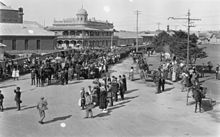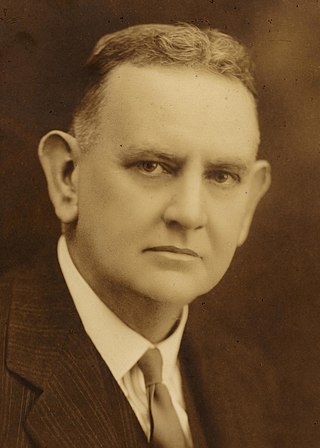
Sir Harry Pateshall Colebatch was a long-serving figure in Western Australian politics. He was a member of the Western Australian Legislative Council for nearly 20 years, the twelfth Premier of Western Australia for a month in 1919, agent-general in London for five years, and a senator for four years. He was known for supporting free trade, federalism and Western Australian secessionism, and for opposing communism, socialism and fascism. Born in England, his family migrated to South Australia when Colebatch was four years old. He left school aged 11 and worked for several newspapers in South Australia before moving to Broken Hill in New South Wales in 1888 to work as a reporter for the Silver Age. In 1894, he moved to the Western Australian Goldfields following the gold rush there, working for the Golden Age in Coolgardie and the Kalgoorlie Miner in Kalgoorlie. Two years later, he moved to Perth to join the Morning Herald, but after that newspaper collapsed, he moved to Northam where he started The Northam Advertiser. He also became friends with local bank manager James Mitchell and convinced Mitchell to run for state parliament. Colebatch was the mayor of Northam between 1909 and 1912.

The Maritime Union of Australia (MUA) was a union which covered waterside workers, seafarers, port workers, professional divers, and office workers associated with Australian ports. The MUA was formed in 1993 with merger of the Seamen's Union of Australia and the Waterside Workers' Federation of Australia.

Civil disturbances in Western Australia include race riots, prison riots, and religious conflicts – often Protestant versus Catholic groups.

Fremantle Cemetery is a 46-hectare (110-acre) cemetery located in Palmyra, a suburb of Perth, Western Australia. Established in 1898, it is the location of over 40,000 burials and 60,000 cremations, including of several murderers and dozens of other notable Australians, and is the final resting place of AC/DC singer Bon Scott.
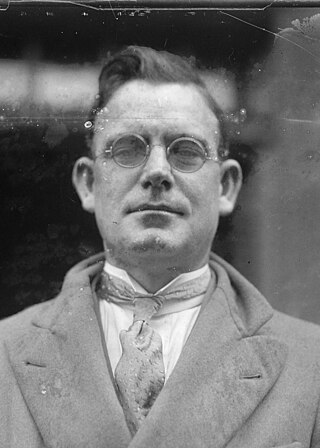
Edwin Wilkie "Ted" Corboy was an Australian politician and public servant. He was a member of the Australian Labor Party (ALP) and served in the House of Representatives from 1918 to 1919, representing the Western Australian seat of Swan. Corboy was elected to federal parliament at the age of 22, setting a record for the youngest member of parliament which stood until 2010. He was defeated after a single term, but subsequently served in the Western Australian Legislative Assembly from 1921 to 1933.

Fremantle Harbour is Western Australia's largest and busiest general cargo port and an important historical site. The inner harbour handles a large volume of sea containers, vehicle imports and livestock exports, cruise shipping and naval visits, and operates 24 hours a day. It is located adjacent to the city of Fremantle, in the Perth metropolitan region.
The Permanent & Casual Wharf Labourers Union of Australia (PCWLU) was an Australian union for maritime labourers.
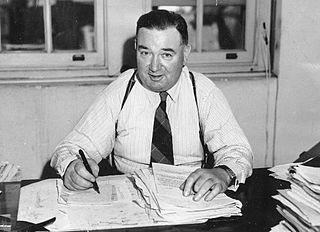
James "Big Jim" Healy was an Australian trade unionist and communist activist. Healy served as General Secretary of the Waterside Workers' Federation of Australia from 1937 to his death in 1961, a period when the union recovered from its defeat in the 1928 waterfront strike to become one of the most powerful trade unions in Australia. Healy was one of the most prominent public representatives of the communist movement in Australia during the Cold War.

Alexander McCallum was an Australian politician. He was the Labor member for South Fremantle in the Western Australian Legislative Assembly from 1921 to 1935. He was Minister for Works from 1924 to 1930. From 1933 to 1935 he was Deputy Premier of Western Australia and Minister for Public Works and Labour. He also represented the South Fremantle Football Club in the Western Australian National Football League in one match during the 1904 season.
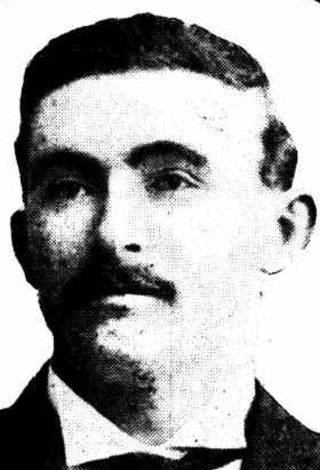
Thomas Fox was an Australian politician, who was a Member of the Legislative Assembly of Western Australia from 1935 to 1951. Earlier, in 1902, Fox played with Australian rules football club Carlton in the Victorian Football League (VFL).
Dimboola is a town in Victoria, Australia.
Timothy William McCristal was an Australian soldier and left-wing activist, and one of the most prolific unsuccessful candidates for political office in Australian history.

The Waterside Workers' Federation of Australia (WWF) was an Australian trade union that existed from 1902 to 1993. After a period of negotiations between other Australian maritime unions, it was federated in 1902 and first federally registered in 1907; its first general president was Billy Hughes.

The Black Armada was a name applied to Dutch merchant and military vessels which were prevented from sailing to the newly proclaimed independent Indonesia from Australian ports due to waterfront strikes or 'black bans' by maritime trade unions from 1945 to 1949.
The Dalfram dispute of 1938 was a political industrial dispute at Port Kembla, New South Wales, Australia protesting the export of pig iron from Australia to Japan during the Second Sino-Japanese War. It became famous for providing the nickname of Pig Iron Bob to Attorney General Robert Menzies, later Prime Minister.
Ronald Thompson was an Australian trade unionist and politician who was a member of the Legislative Council of Western Australia from 1959 to 1980. He served as a minister in the government of John Tonkin.

The Fremantle Trades Hall is a two-storey former trade union hall in Fremantle that was built during the gold boom period and completed in 1904. The building is located at the corner of Pakenham and Collie Streets in the west end conservation area of the city.
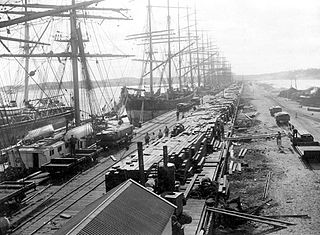
The Fremantle Lumpers Union was a trade union formed in 1889 and active until 1946 when it became part of the Waterside Workers' Federation, Fremantle Branch. It was the first union to represent unskilled workers formed in Western Australia.
Francis James Rowe was an Australian trade unionist and politician who was a Labor Party member of the Legislative Assembly of Western Australia from 1927 to 1930, representing the seat of North-East Fremantle.
Walter Leonard "Ben" Jones was an Australian politician who served as a Labor Party member of the Legislative Assembly of Western Australia from 1917 to 1921, representing the seat of Fremantle.


